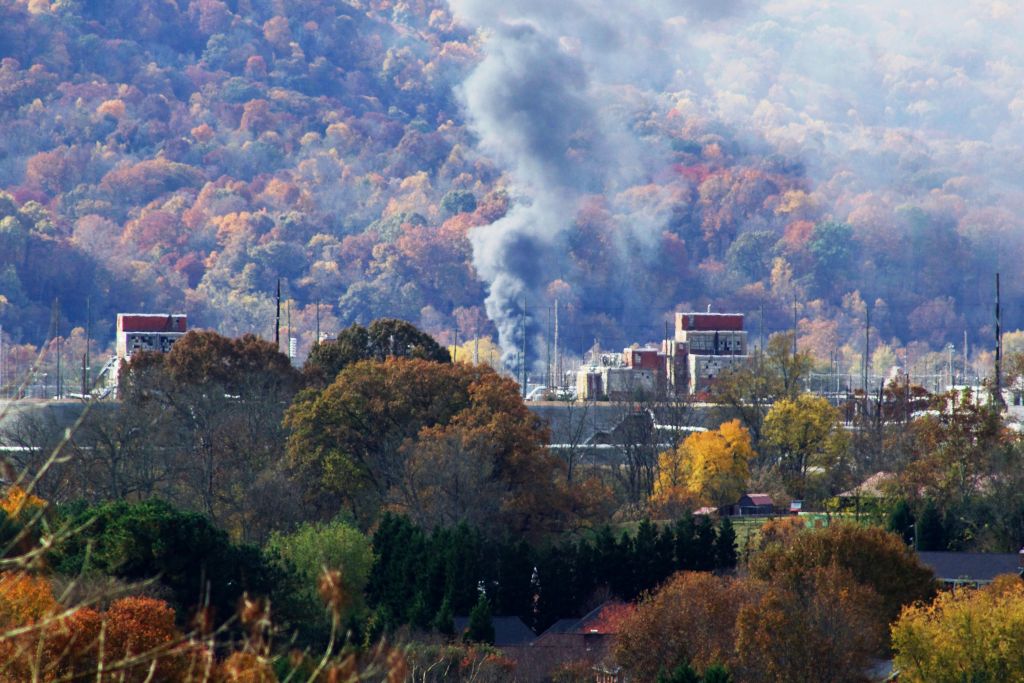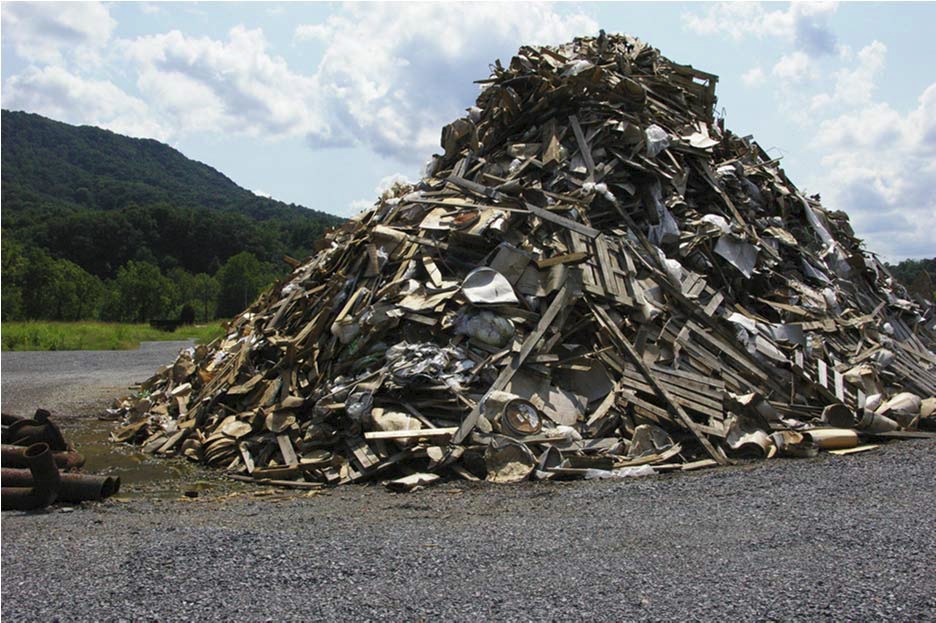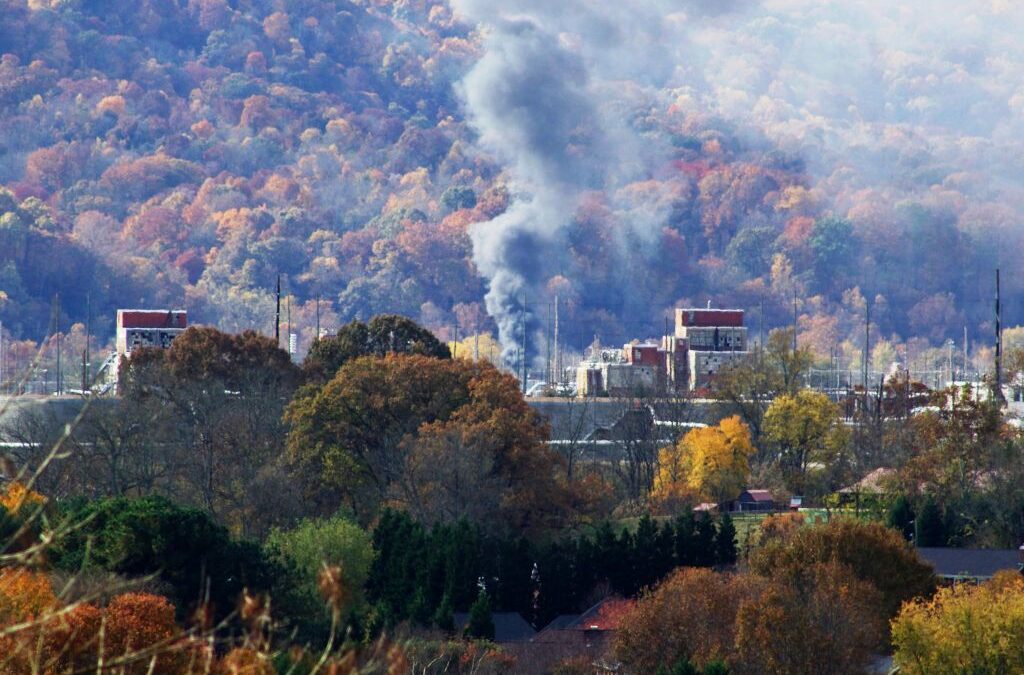
CSWAB, together with other members of the Cease Fire Campaign, is pleased to announce the anticipated release of the National Academies of Sciences study on alternatives to the military’s open burning and open detonation (OB/OD) of hazardous munitions waste – an archaic practice that spews toxic emissions to the environment, placing the health of soldiers, workers and neighboring communities at risk. A free public webinar is set for December 6, 2018.
The munitions industry is the only industry in the United States that is still being permitted to burn hazardous waste to the open air – a practice that was formally banned by Congress in the 1980’s. The U.S. Environmental Protection Agency (EPA) has permitted the practice to continue for decades, despite the long-standing federal mandate.
Air pollutants released by OB/OD include energetics such as DNT, RDX, and TNT which are classified by EPA as probable human carcinogens. Other emissions include lead, arsenic, and mercury which can damage the fetal and infant brain, and endocrine disruptors including dioxins, PAHs (polyaromatic hydrocarbons) and perchlorate.
OB/OD is also being scrutinized in a separate Congressionally-mandated initiative. The U.S. Department of Defense Office of the Inspector General is currently investigating the military’s compliance at active sites conducting OB/OD in the U.S. and its territories. As part of its final evaluation, due in April 2019, the Office of the Inspector General has conducted site visits at 14 Army, Navy and Air Force facilities in 11 states (see footnote). Among them is the Holston Army Ammunition Plant in Tennessee.
 There are three main types of wastes that are routinely open burned at Holston. The first is bulk raw explosives that have become contaminated through contact with the manufacturing floor or out-of-spec product unsuitable for use or reprocessing. This waste is burned normally each week in open burn pans. The second type of waste consists of explosives-contaminated small articles such as plastic bags, paper towels, filters, personal protective equipment, and dewatering filter socks. This material is placed in a steel cage and is generally burned once a week although it is permitted daily.
There are three main types of wastes that are routinely open burned at Holston. The first is bulk raw explosives that have become contaminated through contact with the manufacturing floor or out-of-spec product unsuitable for use or reprocessing. This waste is burned normally each week in open burn pans. The second type of waste consists of explosives-contaminated small articles such as plastic bags, paper towels, filters, personal protective equipment, and dewatering filter socks. This material is placed in a steel cage and is generally burned once a week although it is permitted daily.
The third type of waste is large articles that may be contaminated with explosives and includes various materials, piping from buildings, process vessels, building demolition material including concrete, and possibly soil surrounding these areas. This material is placed in large piles at the burning ground. Since many of the materials that are required to be thermally decontaminated are not combustible, large amounts of wood are used along with kerosene or diesel to facilitate the burning of pile materials.
 Ironically, the Department of Army readily acknowledges that there are viable alternatives to OB/OD. As recently as November 1, the Office of the Assistant Secretary of the Army issued a memo stating: “This memorandum advises commands that the Army has for decades sought alternative methods to reduce DoD’s reliance on the use of open burning and open denotation (OB/OD) for the demilitarization of excess, obsolete, and unserviceable munitions. As part of these efforts, the Army has identified a variety of safe and sustainable closed-disposal technologies that are commercially available to dispose of waste material, including explosive-contaminated waste and explosives waste.”
Ironically, the Department of Army readily acknowledges that there are viable alternatives to OB/OD. As recently as November 1, the Office of the Assistant Secretary of the Army issued a memo stating: “This memorandum advises commands that the Army has for decades sought alternative methods to reduce DoD’s reliance on the use of open burning and open denotation (OB/OD) for the demilitarization of excess, obsolete, and unserviceable munitions. As part of these efforts, the Army has identified a variety of safe and sustainable closed-disposal technologies that are commercially available to dispose of waste material, including explosive-contaminated waste and explosives waste.”
The Cease Fire Campaign is a national coalition of more than 60 social justice, environmental health, tribal, veterans’ service and conservation groups working to protect human health and the environment by calling for the immediate implementation of safer alternatives to OB/OD and incineration of munitions wastes. The National Academies of Sciences study was completed in accordance with federal legislation introduced by U.S. Senator Tammy Baldwin (D-WI) in 2017 and received significant bi-partisan support including U.S. Senator Mitch McConnell (R-KY).
The National Academies of Sciences will host a free public webinar to present the key findings and recommendations of its new report on safer alternative technologies to open burning and open detonation of excess conventional munitions. The December 6, 2018 webinar will begin at 1:30pm EST. Register to attend online at http://convdemil.eventbrite.com.
Title photograph: Open air burning of solid and hazardous waste at the Holston Army Ammunition Plant in Tennessee on November 8, 2018. Toxic emissions routinely drift across the facility to neighboring residential areas. The U.S. EPA currently permits the facility to open air burn as much 1,250,000 pounds of munitions wastes annually – ignoring a 2012 Army Corps of Engineers study that concluded there are cutting-edge technologies that could be successfully deployed at Holston to replace open burning. Photo credit: Volunteers for Environmental Health and Justice.
HOW YOU CAN HELP: Sign the petition to EPA!
Footnote: Department of Defense Office of the Inspector General Site Visit List – Evaluation of DoD Compliance at Active Sites Conducting Open Burning or Open Detonation (OB/OD) of Unused Military Munitions in the U.S. and Its Territories (Project No. D2018-D00SPO-0178.000).
- Radford Army Ammunition Plant (VA)
- Letterkenny Army Depot (PA)
- Aberdeen Proving Ground (MD)
- McAlester Army Ammunition Plant (OK)
- Dahlgren Naval Surface Warfare Center (VA)
- Indian Head Naval Surface Warfare Center and Explosive Ordnance Disposal Technical Division (VA)
- Hill Air Force Base (UT)
- Tooele Army Depot (UT)
- Eglin Air Force Base (FL)
- U.S. Army Redstone Arsenal (AL)
- Crane Naval Surface Warfare Center/Army Ammunition Plant (IN)
- Bluegrass Army Depot (KY)
- Holston Army Ammunition Plant (TN)
- Picatinny Arsenal (NJ)
Army Memo Alternatives Open Burning Munitions 1 Nov 2018
CEASE FIRE Fact Sheet: Alternative Technologies Approved Deployed Sites 2017
CEASE FIRE Fact Sheet: Active OB OD Sites US and Territories 2017

